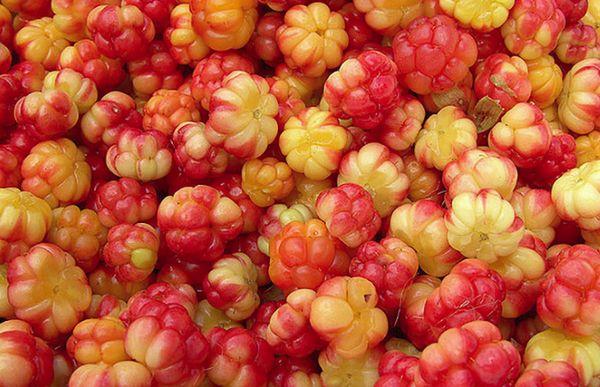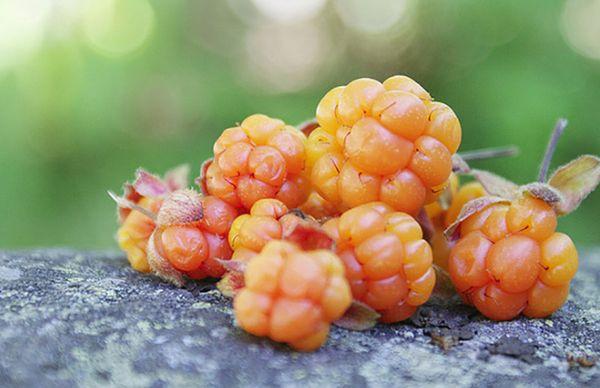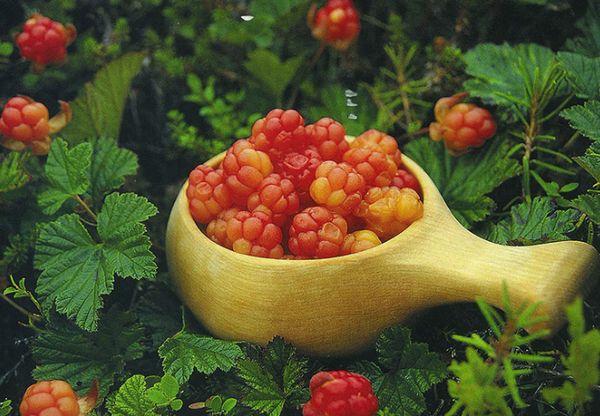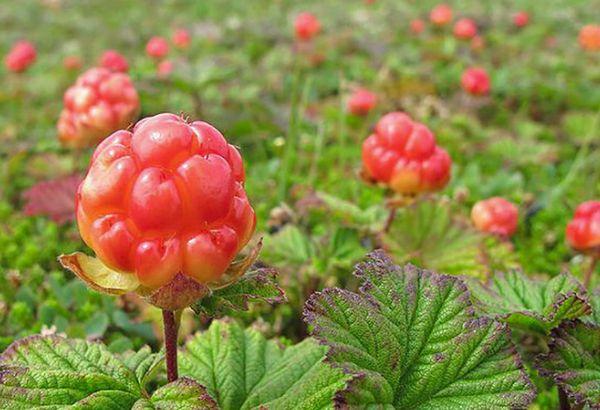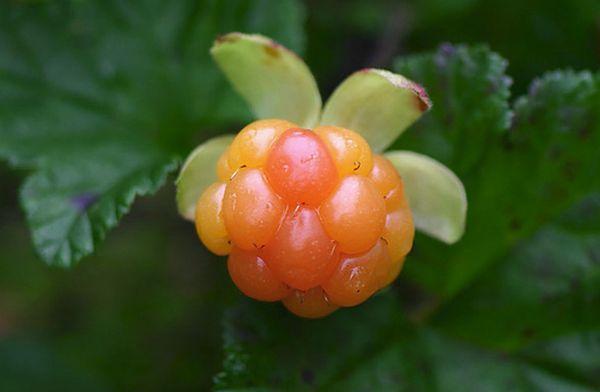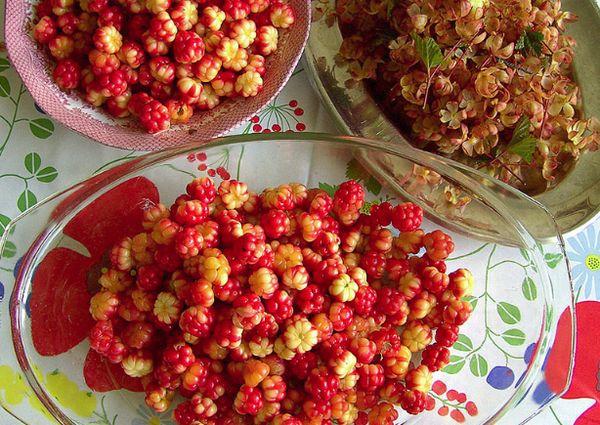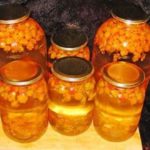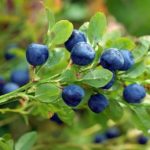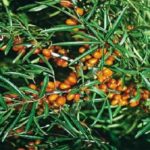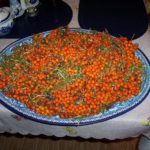The northern cloudberry is a distant relative of raspberries and blackberries; it grows in marshy soils and in the tundra. The berry is delicate, but very healthy. Not only the fruits are healing, but all parts of the plant: roots, stems, leaves. It is difficult to overestimate the health benefits of cloudberry petioles. It is no coincidence that they are used in medicine and cosmetology.
Where cloudberries grow and how the petioles are collected
The berry has many names. It is called “royal”, “northern orange”, “swamp amber” and much more.Cloudberry is a herbaceous plant, low (no more than 30 cm in height), cold-resistant.
It tolerates frost more easily than strong winds or heavy rain. Sudden temperature changes are detrimental to cloudberries:
- In our country it grows in the northern regions, in tundra forests, and swamps.
- Found in Belarus, in the Leningrad region, Pskov, Bryansk. In Belarus, the berry was included in the Red Book, since there is little of it there.
- In the Far East, residents know this berry and its beneficial qualities.
Outside of Russia, cloudberries grow in the Baltic republics and in the northern countries:
- Finland;
- Sweden;
- Norway;
- Canada.
The Finnish €2 coin features a cloudberry, which proves its value.
Each berry grows on a separate stem, so it is impossible to pick by the handful. Cloudberry leaves with petioles are harvested in late spring or early summer, while the buds are setting and during flowering.
The foliage is cut off from the bottom of the stem or from the middle, since the upper leaves have not had time to accumulate healing properties. Flowers are collected simultaneously with leaves and petioles.
Leaves, cuttings, and roots of the plant are dried in an electric dryer or laid out in a dark place with good ventilation. The dried raw materials are placed in canvas bags or clean, dry glass jars. Store where dry, cool and dark.
Dry cloudberry raw materials retain their medicinal properties for about two years.
When collected
The cloudberry harvest begins in central Russia at the end of July, but the plant is becoming less and less common there. And in the northern regions, the berries ripen by mid-August.
Unripe fruits are reddish in color, ripe ones are bright yellow, even orange. You need to have time to collect the miracle berry within 2 weeks. The fruits quickly overripe; in this state they cannot be collected; they will leak and will be unsuitable for transportation.
It is more convenient to pick berries that are a little unripe; at home they will ripen in 3 days. A prerequisite for collection is that the fruits are picked along with the perianth (leaves with petioles around the fruit). They are dried and treated with cough decoction.
Useful properties of the plant
The taste of cloudberries is reminiscent of the taste of orange and currants. The berries are sour, so they are rarely eaten fresh.
The berry has become famous and in demand because of its beneficial qualities:
- It contains a large amount of vitamin C.
- Cloudberry fruits normalize blood pressure and stabilize blood circulation.
- They help remove free radicals from the body and increase immune strength.
- Berries neutralize the harmful effects of bacteria and viruses.
- Normalize metabolism (metabolism), restore strength.
Cloudberry saved the inhabitants of the North from scurvy. Wounds and burns were also treated with tinctures and lotions made from the miracle berry. To prepare medicinal drinks, decoctions, and infusions, not only miracle fruits were used, but also leaves with petioles.
The beneficial properties of cloudberry cuttings are in no way inferior to the fruits:
- restore immunity;
- improve mood;
- put a barrier to the blues;
- awaken appetite;
- make blood vessels strong and strengthen the heart.
Petioles are a valuable cough medicine for bronchitis and colds. A decoction of dried petioles is an expectorant that removes mucus.
Indications for use
The use of the miracle berry is not limited to folk remedies. It is widely used in traditional medicine and the cosmetology industry:
- For influenza, colds, and bronchitis, cloudberry petioles are taken as an antipyretic, antifever, and expectorant.
- Vitamin deficiency, chronic fatigue, decreased immunity, stress, loss of strength - indications for the use of cloudberries. It invigorates and strengthens.
- Development of rickets in children; Residents of the north treat scurvy with decoctions and infusions of cloudberry stalks.
- The plant is effective for diseases of the cardiovascular system, lowering “bad” cholesterol, and high blood pressure.
- Metabolic disorders, gastrointestinal diseases, diarrhea, dehydration are reasons for using cloudberry medicines.
- Healing of wounds and burns will take place quickly if treated with cloudberries.
Frequently eating “northern orange” eliminates fermentation processes in the intestines and restores natural microflora.
How to brew cloudberry leaves
Cough, whooping cough, and bronchitis are treated with tea made from cloudberry leaves. It is also effective in treating urinary tract infections and reduces high fever during colds.
For tea you will need:
- dried leaves with petioles - 1 cup;
- water - 250 ml.
Preparation.
- Dry cloudberry leaves are poured with boiling water. Cover and leave for several hours (3-4).
- Strain. Drink a quarter glass at least four times a day.
To enhance the healing effect, berries are added to tea. The drink will be more aromatic and taste better.
It is more convenient to prepare healing tea in a thermos. It becomes stronger because the thermos retains heat longer. Sometimes, for preventive purposes, a handful of dry petioles are added to regular tea; it acquires a refined taste, aroma, and becomes healthy.
Contraindications
Rarely, individual intolerance to cloudberries occurs. It can cause an allergic reaction such as hives. The culprit is organic acids, which are abundant in the plant.
“Swamp Amber” should not be consumed by people:
- from a diseased duodenum;
- stomach ulcer;
- enterocolitis;
- chronic gastritis;
- severe kidney disease.
Cloudberries should not be taken with medications that lower blood pressure. Before treatment, you should consult your doctor.
Preparation and storage
May, early June is the flowering period of the cloudberry plant. At this time, leaves and petioles are harvested. Berry picking time is limited to two weeks.
It's not easy to collect. Sometimes you have to walk more than one kilometer until you find a clearing with a berry patch.
You should not pick berries near busy roads or near industrial zones. The plant absorbs harmful emissions and substances. Such a berry will not bring any benefit except harm.
Cloudberries are collected early in the morning or in the evening so that the weather is dry. It is important to take mosquito repellent with you, since in the growing areas (swampy) there are always a lot of blood-sucking insects.
Since the cloudberry harvest period is limited, the berries do not last long. They are processed:
- dried;
- frozen;
- grind with sugar;
- make preserves, jams, compotes
Soaked berries are stored for a long time (all winter).
It’s not for nothing that cloudberries are called the royal berry. Of course, fresh berries are healthier to eat than frozen ones or in the form of jam. But cloudberries also have many healing properties. Aromatic tea with petioles in winter will help defeat any cold.


